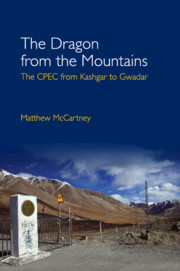Book contents
- Frontmatter
- Dedication
- Contents
- List of Maps and Figures
- List of Tables
- Preface
- Acknowledgements
- 1 Introduction
- 2 Big Infrastructure: Big Problems or Big Benefits?
- 3 CPEC Spillovers Rippling Outwards
- 4 Through the Eyes of Who? Evaluating the Success of the CPEC
- 5 The Dragon Uncoils: Special Economic Zones (SEZs) from Shenzhen to Africa
- 6 The Dragon's Embrace: Pakistan–China Trade Policy
- 7 The Will of the Dragon: The Importance of an Industrial Policy
- 8 Conclusion: The Way of the Dragon or the Way of the Falcon?
- Bibliography
- Index
5 - The Dragon Uncoils: Special Economic Zones (SEZs) from Shenzhen to Africa
Published online by Cambridge University Press: 06 August 2021
- Frontmatter
- Dedication
- Contents
- List of Maps and Figures
- List of Tables
- Preface
- Acknowledgements
- 1 Introduction
- 2 Big Infrastructure: Big Problems or Big Benefits?
- 3 CPEC Spillovers Rippling Outwards
- 4 Through the Eyes of Who? Evaluating the Success of the CPEC
- 5 The Dragon Uncoils: Special Economic Zones (SEZs) from Shenzhen to Africa
- 6 The Dragon's Embrace: Pakistan–China Trade Policy
- 7 The Will of the Dragon: The Importance of an Industrial Policy
- 8 Conclusion: The Way of the Dragon or the Way of the Falcon?
- Bibliography
- Index
Summary
A major headline feature of the CPEC are the nine special economic zones (SEZs) that are planned to be established across Pakistan. The SEZs have become a real symbol of the national nature of the CPEC, with one being promised for every province of Pakistan. This is real concrete evidence, claim the CPEC supporters, that the benefits from the CPEC will spread out to encompass all of Pakistan. The problem with these claims is that they are based on a corner of the CPEC that as yet only exists in the dreams of economic planners and politicians. Much of what passes for analysis of the likely impact of the SEZs is simply the economics of aspirational hope, not rigorous thinking rooted in evidence and theory. This chapter outlines the theoretical and empirical benefits of the SEZs as experienced in other countries and in non-CPEC SEZs in Pakistan, what is promised for Pakistan and how scholars have written about SEZs so far, and the lessons we can draw from the experience of both SEZs in China and from Chinese-invested SEZs in Africa.
THE BENEFITS AND COSTS OF EXPORT PROCESSING ZONES (EPZs) AND SEZs
An export processing zone (EPZ) is a ‘geographically bounded zone in which free trade, including duty free import of intermediate goods is permitted provided all goods produced in the zone are exported’. An EPZ is an isolated and cut-off corner of the global economy. An SEZ is also a geographically bounded zone but lacks this exclusive export orientation. Firms receive various incentives to locate in the zone, often via FDI, and may export or sell their output onto the domestic market. The purpose of an SEZ is to induce the global economy to set up and integrate with the local economy. SEZs first appeared in Puerto Rico (1951) and then Shannon Airport in Ireland (1959) but the main success story was China in the 1980s. By 2008 there were some 3,000 SEZs globally and by 2015 their number reached 4,300 across 130 countries. It has been frequently argued that SEZs played a crucial role in promoting economic growth in 1970s East Asia and in initiating the opening up and marketisation of the Chinese economy after 1979. Inspired by these stories of success, 24 SEZs had been established across Africa by 2009.
- Type
- Chapter
- Information
- The Dragon from the MountainsThe CPEC from Kashgar to Gwadar, pp. 114 - 144Publisher: Cambridge University PressPrint publication year: 2021



